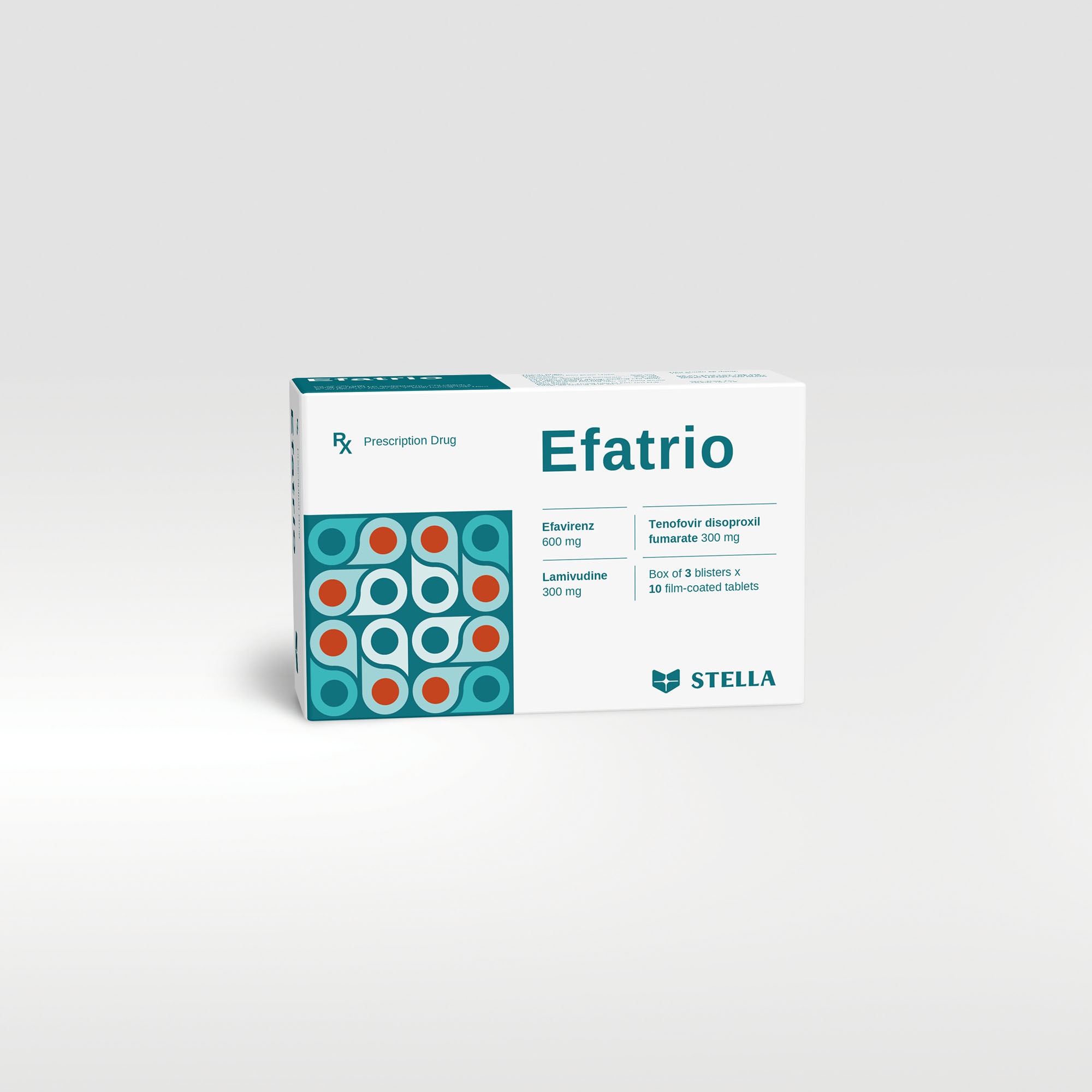Efatrio Rx
Efatrio is a fixed – dose combination of non-nucleoside reverse transcriptase inhibitor efavirenz and nucleoside reverse transcriptase inhibitors lamivudine and tenofovir disoproxil fumarate for the treatment of HIV-1 infection.
| Pack size | Box of 30 tablets. Bottle of 30 tablets, 90 tablets |
| Shelf-life | 36 months |
| Composition | Efavirenz, lamivudine, tenofovir disoproxil fumarate |
| Dosage forms and strengths | Film-coated tablet Efavirenz: 600 mg Lamivudine: 300 mg Tenofovir disoproxil fumarate: 300 mg |











